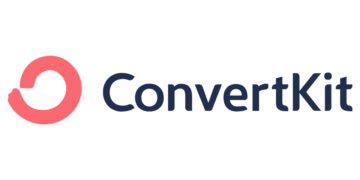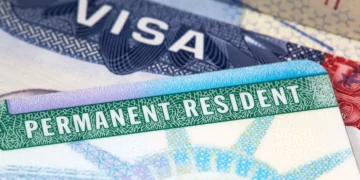No products in the cart.
Investing Your Remote Income Wisely: Building a Secure Financial Future
Introduction
As the world becomes more digitally connected, remote work is becoming increasingly popular. Many individuals now have the opportunity to earn a remote income, allowing them to work from anywhere in the world. While this flexibility is undoubtedly appealing, it also brings about the need for careful financial planning and investment. In this blog post, we will explore how to invest your remote income wisely for a secure future. We will discuss the importance of building an investment portfolio, maximizing retirement savings plans, and investing for financial freedom.
One of the first steps in investing your remote income wisely is to build a diversified investment portfolio. Diversification is key to reducing risk and maximizing potential returns. By spreading your investments across different asset classes, such as stocks, bonds, real estate, and commodities, you can protect yourself from the volatility of any single investment. This strategy allows you to take advantage of different market conditions and potentially earn higher returns over the long term.
When building your investment portfolio, it is important to consider your risk tolerance and investment goals. If you have a higher risk tolerance and a longer time horizon, you may choose to allocate a larger portion of your portfolio to stocks, which have historically provided higher returns. On the other hand, if you have a lower risk tolerance and a shorter time horizon, you may opt for a more conservative approach with a larger allocation to bonds or cash equivalents.
In addition to building a diversified investment portfolio, it is crucial to maximize your retirement savings plans. As a remote worker, you may not have access to an employer-sponsored retirement plan like a 401(k), but you can still take advantage of individual retirement accounts (IRAs) or a self-employed retirement plan, such as a Simplified Employee Pension (SEP) IRA or a Solo 401(k). These retirement accounts offer tax advantages and allow you to save for retirement in a disciplined manner.
When investing for retirement, it is important to start early and contribute consistently. The power of compounding can significantly enhance your retirement savings over time. By investing a portion of your remote income regularly, you can take advantage of market growth and potentially accumulate a substantial nest egg for your retirement years.
Finally, investing for financial freedom should be a priority for remote workers. Financial freedom means having enough passive income to cover your living expenses, so you have the freedom to choose how you spend your time and pursue your passions. To achieve financial freedom, you may consider investing in income-generating assets, such as rental properties, dividend-paying stocks, or peer-to-peer lending platforms.
It is important to conduct thorough research and due diligence before investing in any income-generating asset. Consider factors such as location, market conditions, potential returns, and associated risks. Diversification is also crucial when investing for financial freedom, as it can help protect your income streams and provide stability in case one investment underperforms.
In conclusion, investing your remote income wisely is essential for a secure future. By building a diversified investment portfolio, maximizing your retirement savings plans, and investing for financial freedom, you can make the most of your remote income and create a solid financial foundation. Remember to consult with a financial advisor to tailor your investment strategy to your specific needs and goals. With careful planning and disciplined investing, you can enjoy the benefits of remote work while securing your financial future.
5. Consider the Time Horizon
When building an investment portfolio, it’s essential to consider your time horizon. The time horizon refers to the length of time you plan to hold your investments before needing to access the funds. If you have a longer time horizon, you may be able to take on more risk and invest in assets with higher potential returns. On the other hand, if you have a shorter time horizon, you may want to focus on more stable and conservative investments.
6. Seek Professional Advice
If you’re new to investing or feel unsure about making investment decisions, it may be beneficial to seek professional advice. A financial advisor can help you assess your financial goals, risk tolerance, and time horizon, and recommend suitable investment options. They can also provide guidance on how to diversify your portfolio and regularly review and rebalance it.
7. Stay Informed
Building an investment portfolio requires staying informed about market trends, economic indicators, and investment opportunities. Stay updated with financial news, read investment publications, and consider attending investment seminars or webinars. The more knowledge you have, the better equipped you’ll be to make informed investment decisions.
8. Monitor and Track Performance
Once you have built your investment portfolio, it’s crucial to monitor and track its performance. Regularly review the performance of your investments and compare them to relevant benchmarks. This will help you assess whether your portfolio is meeting your financial goals and make any necessary adjustments.
9. Be Patient and Stay Disciplined
Investing is a long-term endeavor, and it’s important to remain patient and disciplined. Avoid making impulsive investment decisions based on short-term market fluctuations. Stick to your investment strategy and stay focused on your long-term financial goals. Remember that building wealth through investing takes time and requires a disciplined approach.
5. Diversify Your Investments
When it comes to maximizing your retirement savings, diversification is key. Instead of putting all your eggs in one basket, spread your investments across different asset classes, such as stocks, bonds, and real estate. This can help reduce the risk of losing all your savings if one investment performs poorly.
Consider consulting with a financial advisor who specializes in retirement planning to help you create a diversified portfolio that suits your risk tolerance and long-term goals.
6. Take Advantage of Catch-Up Contributions
If you are 50 years old or older, you may be eligible for catch-up contributions. These are additional contributions you can make to your retirement accounts beyond the regular contribution limits. Catch-up contributions can help you accelerate your savings and make up for any lost time.
Check the IRS guidelines to determine the maximum catch-up contribution amount allowed for your specific retirement accounts.
7. Minimize Fees
When choosing retirement accounts and investment options, pay attention to the fees involved. High fees can eat into your returns over time, significantly impacting your retirement savings. Look for low-cost investment options, such as index funds or exchange-traded funds (ETFs), that offer competitive returns with minimal fees.
Additionally, regularly review your retirement accounts and consider consolidating them if you have multiple accounts with high fees. This can simplify your investment strategy and potentially save you money in the long run.
8. Educate Yourself
Stay informed about retirement planning and investment strategies. The more you educate yourself, the better equipped you’ll be to make informed decisions about your retirement savings. Read books, attend seminars, or take online courses to expand your knowledge on topics such as asset allocation, risk management, and tax-efficient investing.
Remember, retirement planning is a long-term endeavor, and the more proactive you are in managing your savings, the more likely you’ll have a comfortable retirement. Start implementing these strategies today to maximize your retirement savings and secure your financial future.
5. Diversify Your Investment Portfolio
One key strategy for investing for financial freedom is to diversify your investment portfolio. Diversification involves spreading your investments across different asset classes, such as stocks, bonds, real estate, and commodities. By diversifying, you can reduce the risk of losing all your investments if one particular asset class performs poorly.
For example, let’s say you invest all your money in the stock market. If the stock market crashes, you could potentially lose a significant portion of your investment. However, if you also have investments in other asset classes like real estate or bonds, the impact of a stock market crash may be mitigated.
When diversifying your portfolio, it’s important to consider your risk tolerance, investment goals, and time horizon. Different asset classes have different levels of risk and return potential, so finding the right balance for your portfolio is crucial.
6. Reinvest Your Dividends and Returns
Another strategy to consider when investing for financial freedom is to reinvest your dividends and returns. Dividends are payments made by companies to their shareholders, usually on a quarterly basis. By reinvesting these dividends back into your investments, you can compound your returns over time.
For example, let’s say you own shares of a dividend-paying stock. Instead of taking the cash dividends and spending them, you can choose to reinvest them by purchasing more shares of the same stock. Over time, this can significantly increase the size of your investment and accelerate your path to financial freedom.
In addition to reinvesting dividends, consider reinvesting any returns or profits you earn from your investments. Instead of withdrawing the money and using it for personal expenses, reinvest it back into your portfolio. This can help your investments grow faster and generate more income in the long run.
7. Regularly Review and Adjust Your Portfolio
Investing for financial freedom is not a one-time event. It requires ongoing monitoring and adjustment of your investment portfolio. Regularly review your investments to ensure they are aligned with your goals and risk tolerance.
As your financial situation or market conditions change, you may need to make adjustments to your portfolio. This could involve rebalancing your asset allocation, selling underperforming investments, or adding new investments that align with your investment strategy.
By regularly reviewing and adjusting your portfolio, you can ensure that your investments are working towards your financial freedom goals.
Conclusion
Investing for financial freedom is a journey that requires careful planning, education, and discipline. By exploring passive income opportunities, educating yourself on personal finance, seeking professional advice, staying disciplined and patient, diversifying your investment portfolio, reinvesting your dividends and returns, and regularly reviewing and adjusting your portfolio, you can increase your chances of achieving financial freedom.
Remember, investing is not a guarantee of financial freedom, and there are risks involved. It’s important to do your due diligence, seek professional advice when needed, and make informed investment decisions based on your individual circumstances and goals.






















![A Comprehensive Review of [Course/Product/Experience Name] 22 man in gray shirt sitting on black chair](https://theamericansidehustle.net/wp-content/uploads/2025/03/man-in-gray-shirt-sitting-on-black-chair-1-scaled.jpg)














































































